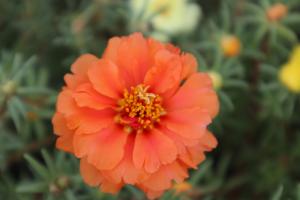How to Water Low Water Plants in Pots
Not all plants require the same amount of water to thrive. Some plants are adapted to surviving in dry conditions and can tolerate being watered less frequently than others. These low water plants are an excellent choice for those who live in arid regions or want to conserve water. However, it is essential to know how to water these plants correctly to prevent under or over-watering, which can be just as damaging to their health. Here are some tips on how to water low water plants in pots:
Choose the Right Potting Mix
One of the essential factors when it comes to watering low water plants is selecting the right potting mix. Using a mix that is designed for drought-tolerant plants can help to ensure that the soil drains quickly and efficiently. Look for potting mixes that contain ingredients like perlite, pumice or sand, which can help to improve drainage and aeration. Avoid heavy, moisture-retentive mixes that can trap water and lead to root rot.
Water Deeply but Infrequently
When it comes to watering low water plants, less is often more. These plants are adapted to surviving with less water, but when they do need it, they require a deep and thorough watering. Aim to water the soil to a depth of at least 3-4 inches, so the water reaches the plant's root zone. Spread the water evenly around the pot, so it is absorbed evenly. Then, allow the soil to dry out before watering again. Over-watering can lead to root rot and other issues, so it is crucial to let the soil dry out between waterings.
Observe and Assess the Plant
One of the best ways to determine whether your low water plant needs watering is to observe and assess the plant regularly. Pay attention to its appearance, and if you notice any wilting, yellowing or drooping, it may be time to water. However, these signs can also be a sign of over-watering, so it is important to assess the soil moisture level before watering. Check the soil by sticking your finger about an inch into the soil. If the soil is dry, it's time to water. If it's still moist, wait a few more days before checking again.
Adjust Your Watering Schedule
Low water plants thrive in hot and arid environments, but they can still require more frequent watering in certain conditions. During hot and dry weather, or when plants are in full sun or windy locations, it may be necessary to increase watering frequency slightly. Conversely, if the plant is in a cooler, shadier area, it may need less water. Pay attention to the plant's environment and adjust your watering schedule accordingly.
Conclusion
Watering low water plants in pots may seem like a challenge, but it's easy once you get the hang of it. By choosing the right potting mix, watering deeply but infrequently, observing and assessing the plant's needs, and adjusting your watering schedule as needed, you can ensure that your low water plants thrive and add beauty to your home or garden with minimal effort.

 how many times do yo...
how many times do yo... how many planted tre...
how many planted tre... how many pine trees ...
how many pine trees ... how many pecan trees...
how many pecan trees... how many plants comp...
how many plants comp... how many plants can ...
how many plants can ... how many plants and ...
how many plants and ... how many pepper plan...
how many pepper plan...





























